Is this the Caribbean?
24 August 2015 We had just dropped the hook in Varkos Bay, a large anchorage off the mainland of Greece with water...
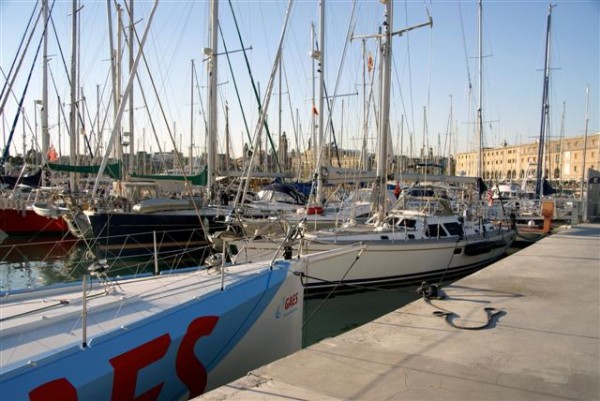
Recently, we have received numerous complaints that this blog has not been kept up to date. We appreciate that people follow our travels so closely, but we make no apologies. When we started documenting our cruising adventures aboard Berkeley East, more than three years ago, we promised ourselves that we would not be slaves to it. So in keeping that commitment, it has been about three months since our last entry. To those of you who thought we were lost at sea or captured by pirates, don’t be so dramatic! We’ve just been too busy having fun to take the time to write about it.
Berkeley East is currently resting in her winter berth in Barcelona, Spain. We are in the US, visiting family and friends, and catching up on our land responsibilities. We will return to Barcelona in April to get ready for another season in the Mediterranean, this time through parts of France, Italy, Greece and Turkey (we think). Following is an update on some of our travels (since our last entry in September when we were leaving Menorca in the Balearic Islands and sailing to Barcelona). Because this entry covers such an extended period of time, it is quite lengthy, so pour yourself a glass of wine and get comfortable. In the future, we will try to be better about updating this blog, then again, we can’t make any promises.
Berkeley East in Barcelona.
Almost six months and more than 5,000 miles since we left the US, we arrived at our final destination for the year, Barcelona Spain. It was mid September, a bit earlier than planned, but we wanted to meet up with Paul and Jan, good friends from Charlotte. What should have been a quick overnight sail from Menorca, actually ended up being one very long motor, with more boat traffic than we had seen in months. Landfall at Port Vell Marina, in the heart of Barcelona, brought to an end one fantastic cruising season, but it was also the beginning of an exciting new life on land.
We spent our first few days in Barcelona giving Berkeley East some TLC and getting ready for our guests. Then, we spent the next few weeks getting to know the city, in-between trips to other parts of Spain. Barcelona is unlike any city we’ve experienced before. It is busy and vibrant, yet quaint and comfortable. It is old and historic but looks modern and cosmopolitan with unique architecture and artwork throughout the city.
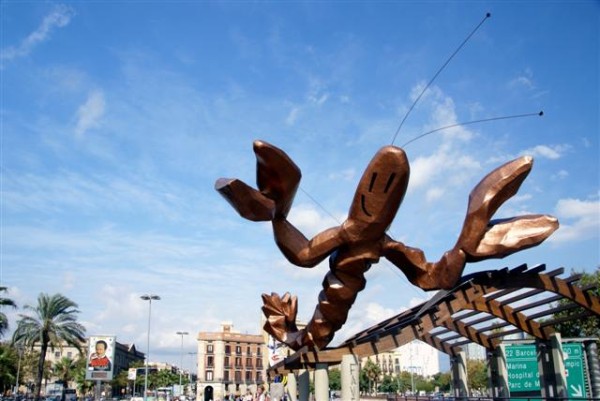

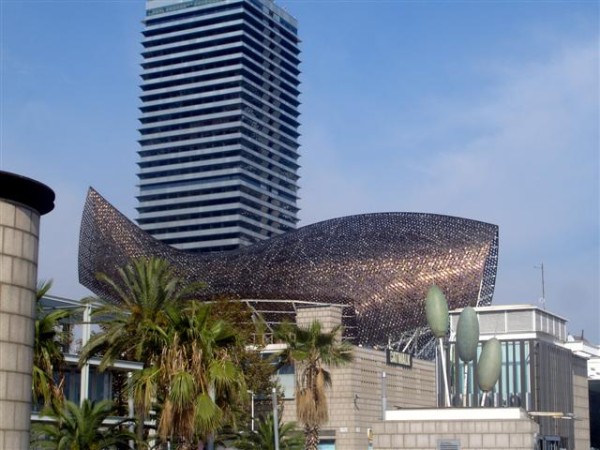
Living on a boat in a marina is not something we love to do, but living on a boat that is just steps from the city of Barcelona is pretty fun. Museums, historic sites, restaurants, shopping are moments away. We can walk or take the train everywhere. And there is a large network of live-aboard cruisers in the marina so whenever we get tired of being tourists, we can talk boats with our neighbors.

Barcelona Highlights
We’ve always loved city life, so we knew we would love living in the city of Barcelona. But this city experience is even better than others because we don’t have to go to work! Having visitors arrive in Barcelona shortly after we did helped us to get right into the role of tourist. With Jan and Paul, we explored as much of Barcelona as they had time for, and even took day trips out of town to Montserrat, Terragona and the Priorat wine country. Then we continued to explore the city on our own, getting lost (literally) in its charm. Barcelona has so many small streets and alleys that you can spend hours walking from point A to point B, with new discoveries at every turn. We spoke to a woman at the marina who has lived here for ten years and is still finding new paths. Luckily, taxis are cheap and they all know where the marina is so we can never get too far from home. As tourists, we have taken bus tours of the city and explored most of the top attractions. As locals, we have found hidden treasures in everyday life.

Just an hour train ride from Barcelona, Montserrat is a Benectine monastery that is carved into an unusual rock mountain. While many people come to see the Black Madonna, it is also popular for hiking and its beautiful scenery. It is a great day trip and a picnic lunch is the perfect complement to the surroundings.
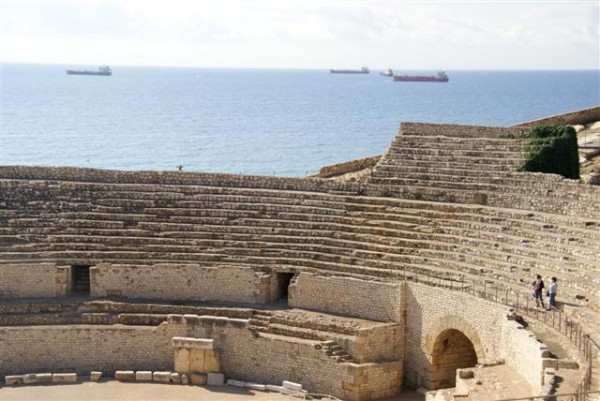
Terragona is a seaside city just a short drive from Barcelona with many interesting Roman ruins. We were fortunate to arrive there at the start of the Santa Tecia festival and enjoyed the parade of children and musicians through the city streets.
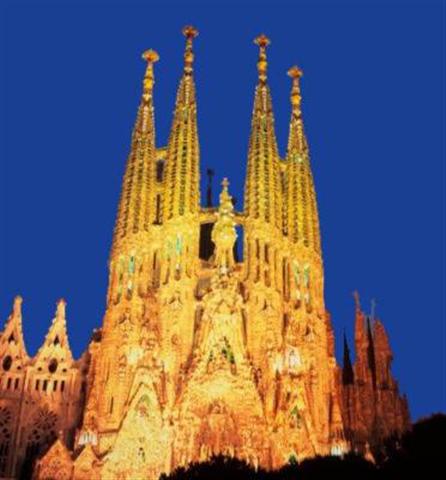
The Basílica i Temple Expiatori de la Sagrada Família, commonly known as the Sagrada Família, is a large Roman Catholic church in Barcelona, designed by Catalan architect Antoni Gaudí. Although incomplete, the church is Barcelona’s most famous landmark, a UNESCO World Heritage Site, and in November 2010 was consecrated and proclaimed a minor basilica by Pope Benedict XVI.
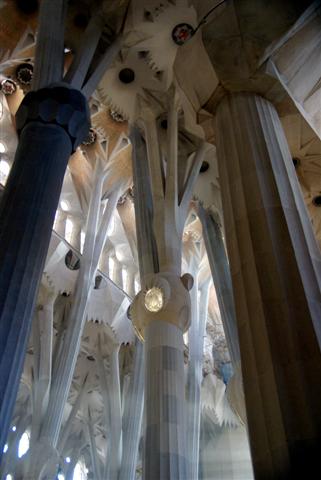
Construction of Sagrada Familia commenced in 1882, numerous architects have passionately carried on the work, and expected completion is 2026. While we pre-purchased our tickets on the internet, even the long lines would have been worth the wait to see this incredible creation.
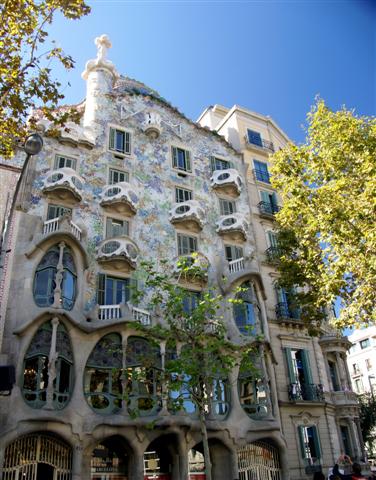
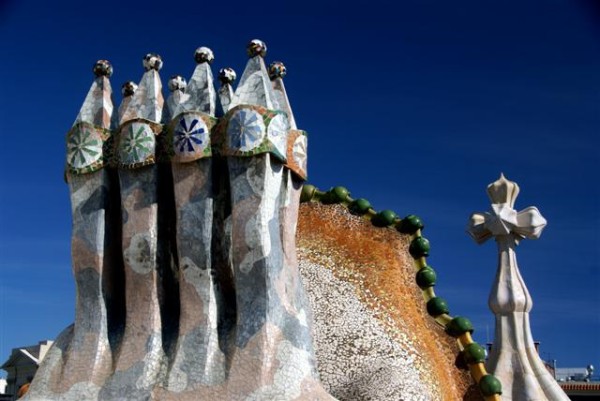
The present Casa Batllo, is the result of a total refurbishment of an old previous conventional house built in 1877. Antoni Gaudi was commissioned by the owner Josep Batllo i Casanovas to totally renew the old building, resulting in this astonishing house, one of the most elaborate of Barcelona. Before visiting Barcelona, we were not very familiar with Gaudi’s work, but while touring Casa Batllo, we recognized a style that was used in the home of a close friend’s parents in Southern California.
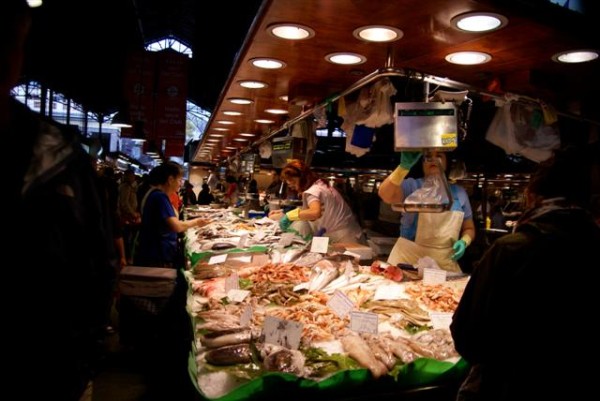
La Boqueria, a large public market, is surprisingly also one of Barcelona’s foremost tourist landmarks. During our first visit to the market, we decided to have lunch at Bar Pinotxo. There where no menus and the waiter didn’t speak English, he just served us what he was making for everyone. The chick peas were excellent! We continued to go back here for fresh food and stop in at Pinotxo.
The Tapas Challenge
Tapas are typically recognized as small savory snacks that are served as an appetizer. In Spain, tapas are often a complete meal with plate after plate of everything from peppers to sardines. Some are mouth-watering tidbits that leave you wanting more, some are odd combinations that are difficult to choke down. While in Barcelona, we made it our goal to find, what we consider, the best tapas in town. And after several weeks of multi-dish meals, accompanied by great Spanish wines, we found some favorite tapas taverns, led by one hole-in-the-wall place that doesn’t even have a name on the door. Recommended by locals, we went in search of La Cova Fumada (LCF) with our Charlotte buddies Paul and Jan. While the rest of us peeked in the door and questioned whether we should, Jan asked “why not?” Jan will try anything, and in this case, that was a good thing because all of the food (even sardines) was fantastic. We continued the challenge for weeks more, but nothing could stand up to the yummy tapas at LCF. Finally tapased-out, we went in search of good old-fashioned Mexican food.
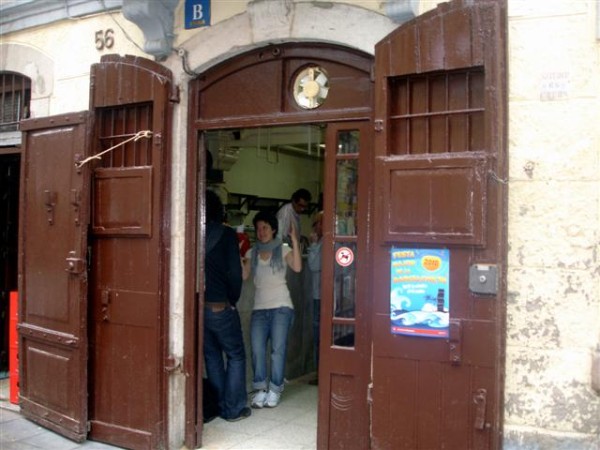
We continued the challenge for weeks more, but nothing could stand up to the yummy tapas at LCF. Finally tapased-out, we went in search of good old-fashioned Mexican food.
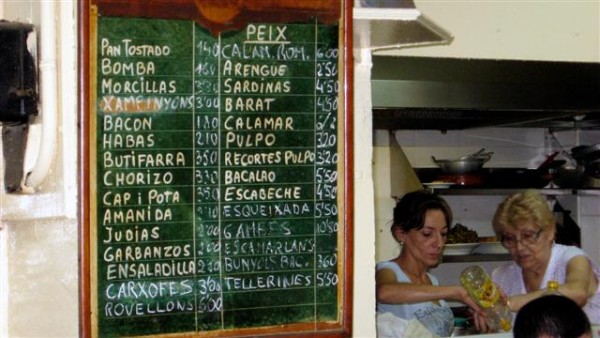
La Mercè
La Mercè is Barcelona’s largest annual festival. It has been an official city holiday since 1871 when the local government first organized a program of special activities to honor Mare de Deu de la Merce, the Patron Saint of Barcelona.. The city, and its continual ability to renew itself, is the very soul of the festival when novelty and tradition combine and are expressed through art, music and theatre. We were lucky enough to be in the city for the entire festival and were able to attend many of the weeklong events.
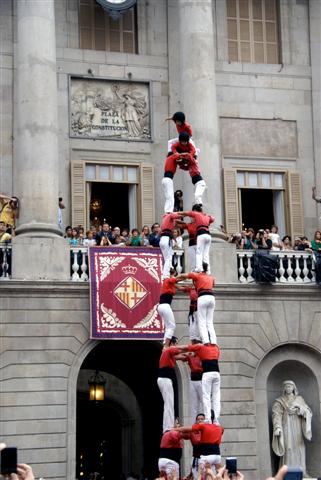

One of our favorite La Merce events was the Castellers (Human Towers) when several groups compete to build the tallest and/or largest human tower and have a young child climb to the very top of the tower and stand up. We stood in the crowd of thousand of people cheering on the competitors, were shocked when one tower collapsed and even more surprised that no one got hurt. It requires tremendous skill, strength and bravery from everyone involved.
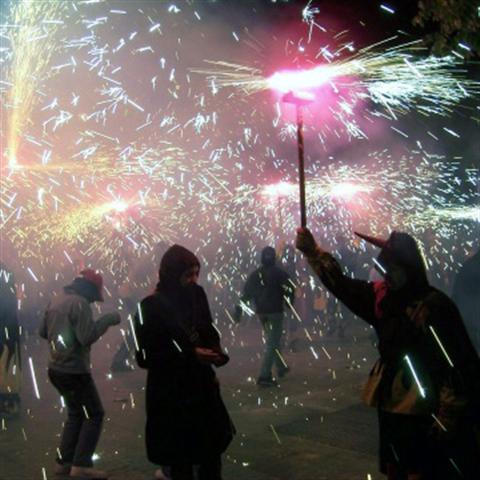
Correfocs or “fire-runs” was one of the most striking La Merce events. In the correfoc, a group of indivudals dress as devils and light fireworks. While dancing to traditional drums, they set off their fireworks among crowds of spectators. We joined many other crazy people to watch the correfocs parade through the streets, with Larry running forward to try to capture a picture without getting hit by the fireworks and Mary hiding in the back with the rest of the cowards.
Wine Trips in Spain
After getting settled in Barcelona, we started taking trips, a couple to Spanish wine regions. They all were great. Great scenery. Great people. Incredible history. And of course, great wine. Our orientation to Spanish wine started when we arrived in Cadiz in July and extended through the Balearics with sangria, but it wasn’t until we arrived in Barcelona that we really got a feel for the quality and value of the Spanish wines.
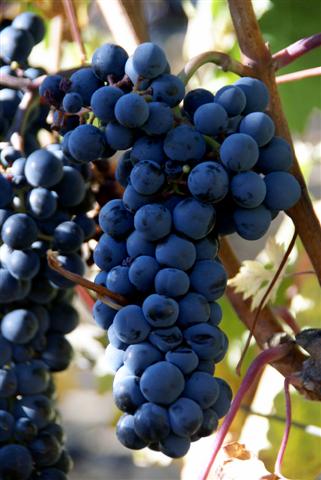
In the first few days in Barcelona, we found a couple of great wine bars just steps from Berkeley East’s winter home. These became regular hangouts, a place to stop in when we wanted a quick glass of Cava (Spanish Champagne) before a late dinner (actually, all dinners are late here), or something sweet after an evening walk. But like our trips to the wine areas, there is much more to our Barcelona wine bars than just wine. The Cava Bar is a Barcelona institution where locals and tourist gather for $1 Euro glasses of refreshing Cava and tasty sausage sandwiches (a required purchase with wine). And our favorite wine bar has a view of a beautiful church, Santa Maria Del Mar.
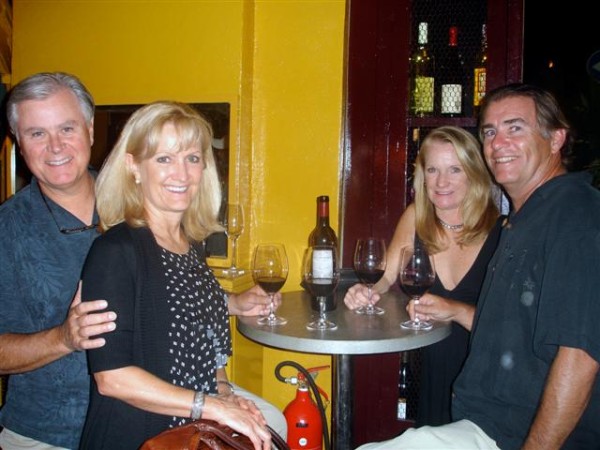
Our first trip was to the Priorat wine region, a remote, rocky, mountainous area considered to be home to Spain’s most elite wines. The vines grow on steep hillsides, in slate, and yield very concentrated wines, made mostly of Granacha. We expected great wines, but were blown away by the scenery. Breathtaking valleys, mountains and rivers surround the vineyards.
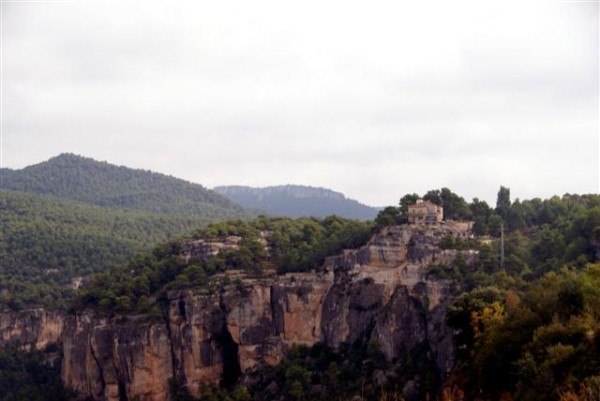
And the towns are small quaint villages. Most were so small we couldn’t drive the rental car through the narrow streets. Gratallops, where we stayed, was such a tiny place, they had a loudspeaker on the church tower to make daily announcements to everyone in town.
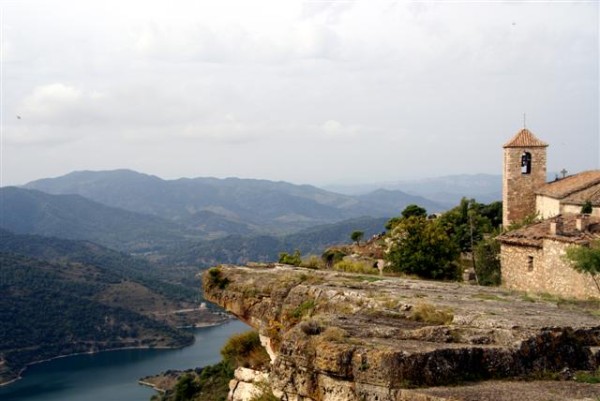
We were very fortunate to be hosted to the region by one of the top wine makers in the Priorot. Daphne showed us around her winery, took us to dinner where we had one of her outstanding wines, and then to lunch the next day where we tasted her assistant Esther’s great wine. Both are almost impossible to buy and Daphne’s has been rated 100 points by Robert Parker.

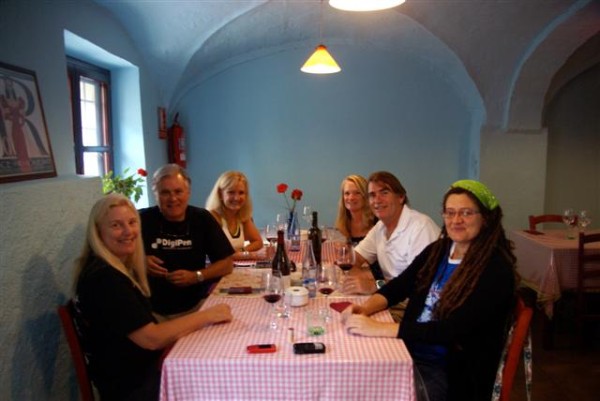
We only visited one other winery, as most are not open to the public. Here, we saw the old vineyard cooperative system at work. As it was harvest time and all the farmers were bringing their crop to the cooperative for processing.
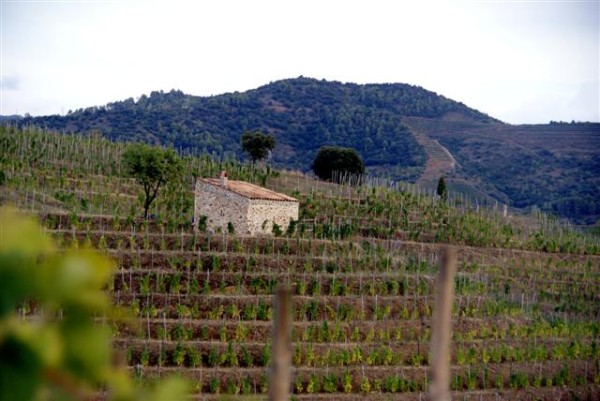
Our next trip was to Rioja, in the north of Spain on the boarder of the Basque province. Rioja is probably Spain’s best-known wine region.
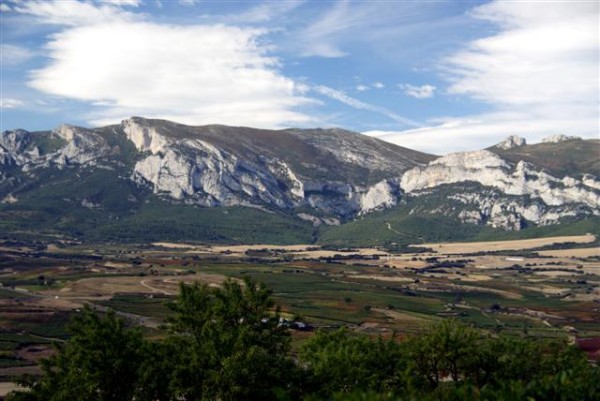
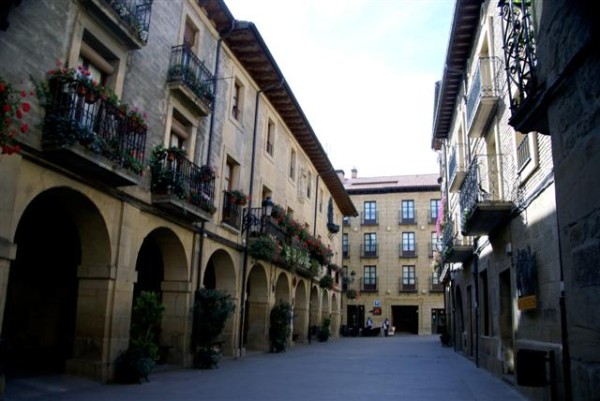
The combination of ancient monasteries, historic villages, rustic restaurants, innovative architecture and unique wineries made for an unbelievable trip. It was surprising to see very modern winery facilities intermixed with the historic towns and beautiful countryside.

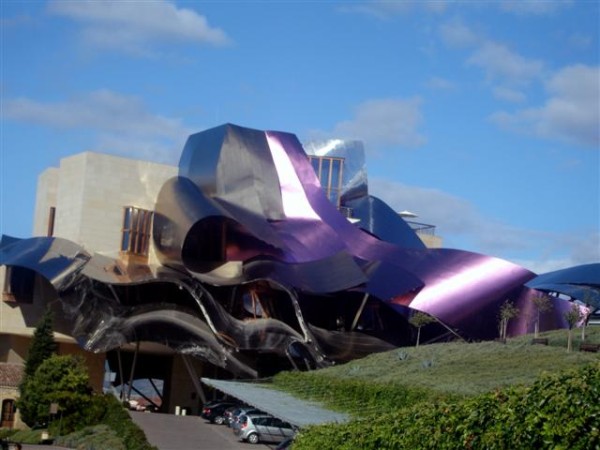
Staying at the Frank Gejry designed Marqués De Riscal was a unique experience. We looked out the window, from this ultra modern hotel and winery, to see the beautiful, small village of Elciego.
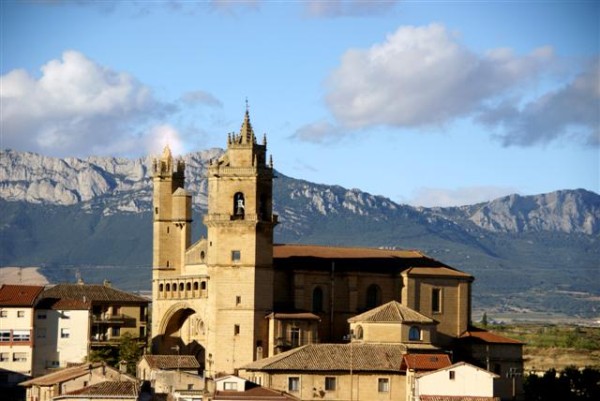
You would think that after doing a couple of winery tours, you’d know it all, but from the traditional to the contemporary, all of the 13 wineries we visited in Rioja taught us something new about wine and the wine making process. As we tasted our way through more than 50 different wines, we grew to enjoy Tempranillo, Gracaino, Mezuelo, Joven (young), Crianza, Reserve and Grand Reserve wines. The most impressive wines came from the wineries that were “breaking the rules” and making outstanding modern wines from traditional grapes.
But as usual, it was the people who made the trip the most fun. We stayed at a small winery with six rooms. Each evening, Jesus (the owner) would open up the tasting room and sometimes we would sit on the porch tasting his wines and trying to converse with him, his wife and son. It was always exciting, as our broken Spanish is still weak at best, Jesus’ English is as bad as our Spanish, and his wife and son don’t speak any English at all.
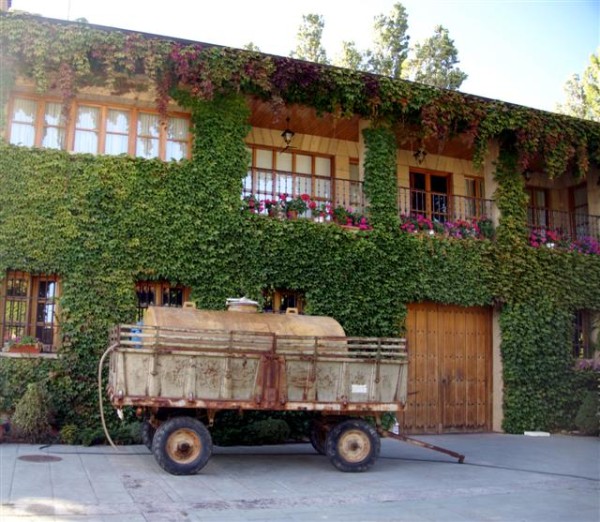
It was harvest at the wineries so everyone was very busy, but they all took time to talk to us about their wines. We got to pick grapes, taste the free-run juice as it ran into the fermenting tank and visit with the great grandchildren (now running the winery) of the founder of one of the oldest wineries in Rioja.
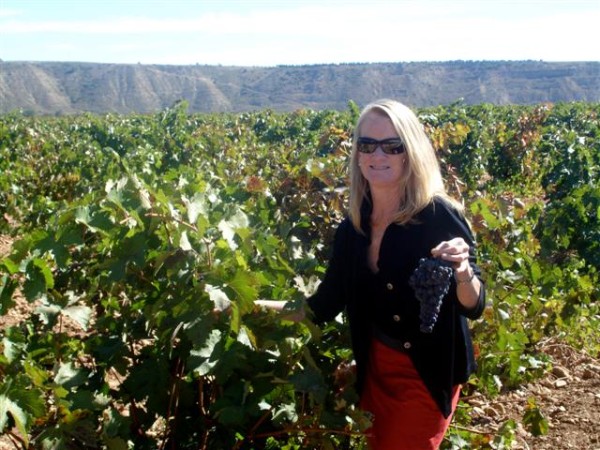
It was great to see a community thriving and full of diversity. There were wineries that are still making wine the same way they did 100’s of years ago, constructing their own barrels, transporting the grapes from the field in oak barrels, using large old wooden vats for fermenting and aging wine in old oak.

And then there are the new wineries with the latest technologies and processes, limiting the usage of oak, making more concentrated wines and replacing barrels every three years.
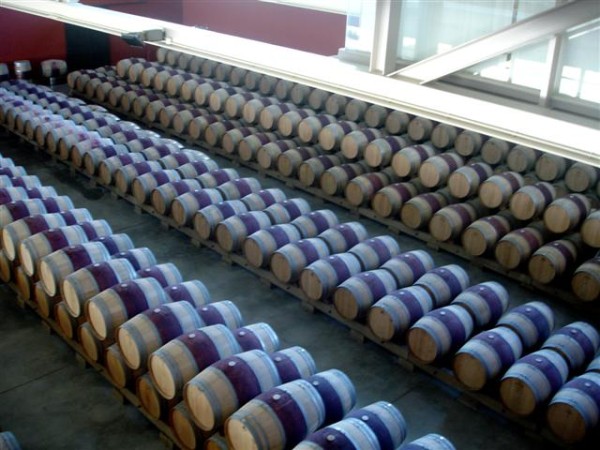
The debate rages about which style is best, but for our palettes both styles were excellent when produced carefully, with a focus on quality over quantity. So we happily brought a bit of wine back to Berkeley East in preparation for our next sailing season.

